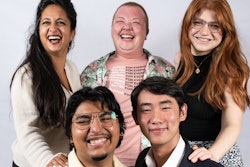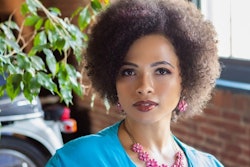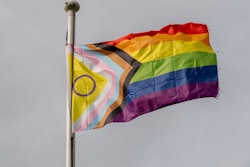As the daughter of an interracial couple growing up in a middle-class town on Long
Island in the 1970s, Soledad O’Brien learned not to let inappropriate or racist comments throw her. “On the one hand it was a very normal, boring middle class childhood, and on the other we knew we weren’t always going to fit in,” says the CNN journalist.
So when the Rev. Jesse Jackson complained that CNN didn’t have any Black anchormen and anchorwomen and dismissed her Afro-Cuban heritage on her mother’s side saying at a private meeting in 2007 she didn’t “count as Black,” O’Brien was embarrassed at her response. She felt angry and did not push back with a follow-up question.
“Today, I would have said, ‘Well what do you mean?’” says the 44-year-old reporter.
Now as the anchorwoman of CNN’s “In America” documentary unit, she says she asks those uncomfortable questions about race all the time.
“One of the things that has been a real strength, and a real value in our ‘Black in America’ and ‘Latino in America’ series is that we push on those uncomfortable questions.”
O’Brien’s mixed race background — she checks Hispanic, Caucasian and Black on U.S. Census forms — has undoubtedly shaped her work, says Rose Arce, a senior producer who has worked with O’Brien for the past six years.
“She doesn’t see the viewership as being monolithic and narrow,” says Arce. “I think she truly is a broadcaster. She sees all different stories for all different people.”
In the next few months, CNN will air four new “In America” documentaries, including a tribute to the female rescuers of Sept. 11, “Beyond Bravery — The Women of 9/11”; a story about miners in West Virginia, “The Battle for Blair Mountain — Working in America”; and new “Latino in America” and “Black in America” documentaries. From gay and lesbian family issues to Islam in America, O’Brien is not afraid to explore touchy subjects.
“Clearly there is a value in telling diverse stories, and by diverse mean everybody,” says O’Brien, who won the Edward R. Murrow Radio Television Digital News Association/UNITY award in 2010 for the first “Latino in America.”
She is inclusive and tenacious, says Arce, and that is what sets O’Brien apart from other journalists. “We share a common desire to give voice to a lot of communities that often go unheard.”
The documentaries have a positive and negative side, according to Dr. José Luis Benavides, chairman of the journalism department at California State University. “They acknowledge the relevance of race and ethnicity as one of the primary categories to understand society … in doing so they make it look like race and ethnicity are discrete, separate categories, when in reality they are only part of a larger picture.”
Benavides points out that class and sexual orientation play a role as well. He thinks that any coverage that avoids stereotypes and addresses issues not covered elsewhere in the media landscape opens doors for discussion.
The next “Latino in America,” titled “In Her Corner,” will chronicle the struggle of a Mexican-American boxer from Houston who aspires to be the first female U.S. boxer at the Olympics. It airs Sept. 25.
Too often stories about minorities focus on the barriers to success, says Arce, so this story will follow a triumphant story instead. “It’s very much about Latino culture, but it’s also about aspirations and success. It’s something that the Latino community has wanted from us for some time,” she says.
O’Brien adds that the boxer they follow is changing the game for Latinas. Her Sept. 11 documentary also will shed light on brave women, telling the stories of female firefighters, EMS workers and law enforcement officers who have defied macho stereotypes in their professions. Walking around the World Trade Center site and hearing the women talk about losing friends and family members was an unforgettable experience, says O’Brien.
Journalism can be a very rewarding career, and it is very much alive, says O’Brien, dismissing any notions that journalism is no longer a desirable profession. It was changing when she started as an associate producer at WBZ-TV in Boston in the 1980s, and it is changing now. However, it is nothing to be put off about as a young reporter, she says.
O’Brien’s achievements are applauded by Dr. Félix Gutiérrez, professor at the University of Southern California’s Annenberg School for Communication and Journalism. “Everyone kind of wants to be an anchor, and she’s done that, but she’s been able to combine the eye of the producer and the eye of the reporter,” he says in reference to the “In America” series.
While she will not cover wars because she does not want to jeopardize her safety as the mother of four children, O’Brien has done her share of disaster-zone reporting.
From the aftermath of the 2004 tsunami in Southeast Asia, to recovery efforts in Haiti, to the nuclear reactor disaster in Japan, O’Brien’s job requires a lot of travel. She’s learned to balance producing documentaries and raising four young children by taking them with her on trips.
She alternates which child gets to go each time.
“I think everybody can have whatever they think they can tackle,” says O’Brien, pushing aside the idea that women cannot have ambitious careers and a family. “It’s unrealistic to think that you can’t do work at home and that you can’t deal with family matters at work,” she adds.
Recently, she brought work into her family life more than usual by starting a foundation with her husband, investment banker Brad Raymond. The Soledad O’Brien and Brad Raymond Family Foundation provides grant money to high achieving, low-income students so that they can go to college. O’Brien and her husband officially launched the foundation in 2010 but had been supporting education efforts since 2005.
One of the first recipients, in fact, was a student from the first “Black in America” documentary who was not finishing school because she could not afford day care for her son. The student, Nya Buckley, is a junior at Lehman College in New York with a 3.7 grade point average.
“I know a lot of people out there who are living the American dream,” says O’Brien. “Sometimes they just need to be shoved across the finish line a little bit.” Her organization has awarded grants to 13 young women and two young men, totaling about $150,000.
“These young students who we’ve helped, they’ve been successful because of what they’ve done. My husband and I have just helped pay for it,” says O’Brien who elaborated on her worldview in her 2010 book, The Next Big Story: My Journey Through the Land of Possibilities.
Now that CNN has expanded the “In America” franchise, O’Brien is pleased that she has proved that “you can be financially viable with stories that are really diverse.”
While the next “Black in America” documentary has not been named, it will be airing Nov. 13 and dissecting whether race really matters in the business world, specifically the tech industry.
O’Brien and her team will be following eight young men and women as they pitch their ideas to companies in Silicon Valley.
Black men and women are really underrepresented out there, she says.
At the core of every story is O’Brien’s desire to explore uncharted territory. “My parents — their story of how they met and how they dealt with being an interracial couple — made me really interested in covering those stories,” says O’Brien.





















